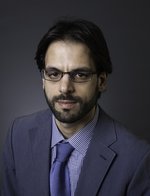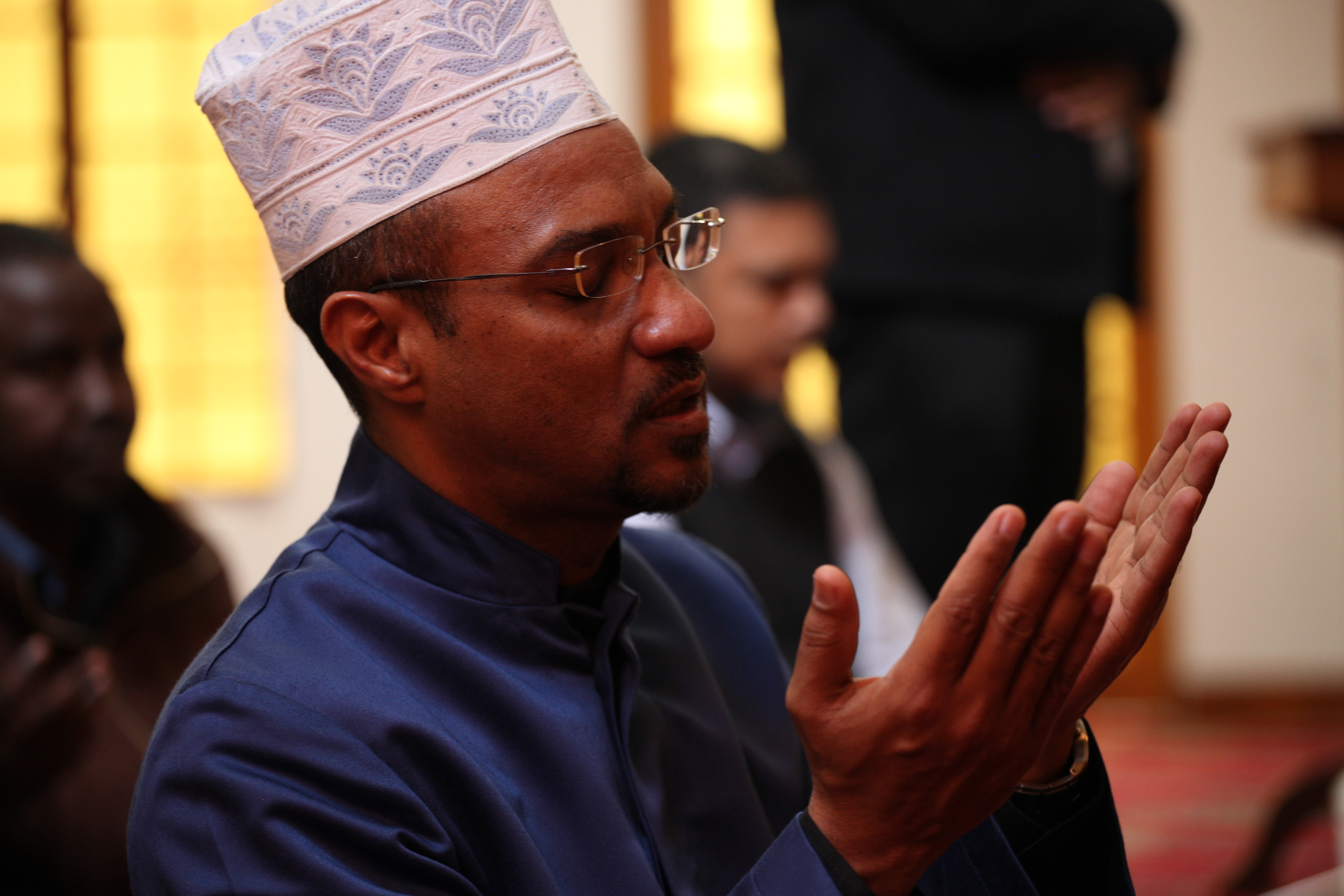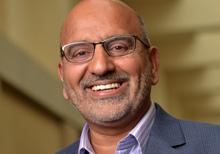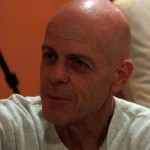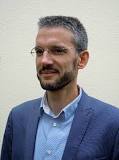The intellectual enterprise of talking about multiculturalism and pluralist co-existence carries an inherent tension. On the one hand, the gap between theorizing and empirical research points to the need to embed ourselves in a dialectical understanding of both spheres. On the other hand, the field carries the exciting and yet traumatizing effects of a dynamically changing landscape, rendering long-term analysis difficult. The public debate often becomes overly focused on the day-to-day developments and makes co-imbricated realities all the more complex. Having experienced this difficulty during my fieldwork within the Muslim communities in Boston and the San Francisco Bay Area, where I spent considerable time among six Muslim communities, I wanted my research in Los Angeles to focus more exclusively on the wider narratives that defined the public conversation on religion in Southern California.
Faced with this challenge I travelled to the Los Angeles metropolitan area in June 2013 to observe how Muslim, Catholic and secular communities interacted not only with each other but also within themselves, and how they perceived the deep pluralities of the modern age in an increasingly cosmopolitan, diverse landscape. It soon became clear that this city with 13 million residents stands out as a not-too-small laboratory for the national debates in the U.S., from immigration reform to the Supreme Court’s Hobby Lobby and Wheaton College decisions in 2014, to more recent national conversations on sexual identities, racial discrimination, criminal justice reform, and the challenge of ISIS. In many ways Los Angeles is a microcosm for the many difficult conversations that haunt academics, policy-makers and lay citizens alike.
The full-scale representation of the nation’s most pressing conversations in Los Angeles becomes all the more important when its religious roots are considered. Los Angeles has been a major center of Catholic immigration and institutionalization from the early 17th century onwards; it witnessed the birth of the Pentecostal tradition in early 20th century; and has been home to one of the most diverse populations of American Muslims. From West Hollywood’s famous celebrity-sighting spot Urth Caffé, a product of the cooperation between an interfaith couple and their ecumenical-Christian-new-age religious networks, to the role of inner-city religious congregations in healing the city after the 1992 Rodney King riots, religious identities and actors are markedly important in constituting the city’s moral economy even as Los Angeles continues to lead the production of materialist/secular ethos that shapes not only local and national, but also global perceptions of the contemporary world.
Global Challenges, Local Dynamics and Securitization
The illustrative debates in Los Angeles indicate the need for urgency in unpacking what liberal citizenship can—and fails to—offer to help make sense of “deep plurality” in both the theoretical and the everyday realms. In a 2014 interview with the New York Times, President Obama argued that what went wrong in the Arab Spring and the Muslim world, in general, was the failure to bring together multiple political, ethnic, and religious identities in a pluralist ethics. Several months later, in a statement in the aftermath of Charlie Hebdo attacks, Obama also argued that unlike in the case of America’s Muslim immigrants, Western European countries failed to develop inclusive policies of integration toward their Muslim populations. While Obama’s earlier reference was directed towards the dynamics between Democrats and the Republicans, and American Muslims feel they are advantaged compared to most European Muslims, it is imperative to take this problem seriously and realize that despite the political and cultural legitimacy attained by most religious minorities in the United States, American civil religion is not free of challenges.
My Muslim interlocutors in California increasingly recognize that while part of the country and the political elite grant them a public role and legitimacy, there are others who have found ample public space to delegitimize and securitize Muslim Americans. Even optimists are quick to criticize Obama, who enjoys overwhelming support among American Muslims. They argue that while the Federal government has invested a lot in optics when it comes to engaging with American Muslims, the President has carefully avoided stepping his foot in a mosque in the United States due to fear of electoral politics. They also point to the FBI’s continuous surveillance of mosques and use of informants to argue that meaningful engagement with Muslim Americans has not found adequate attention on the part of the Federal government, and that often times Muslims are treated “publicly as partners and privately as suspects.” While several meetings in the White House over the last year have started to address this problem, a long-term perspective underlines that not only federal but also local dynamics and partnerships will be a crucial component in overcoming anti-Muslim populist bias.
And yet, the exploitation of populist fears and discourses have become only more pronounced in the aftermath of the November 13, 2015 Paris and December 2, 2015 San Bernardino terrorist attacks. The fallout from both attacks has further increased the already unprecedented spike in anti-Muslim hate crimes and sentiment, creating historic levels of anxiety across American Muslim landscape. More promising developments, however, have also been seen. Building on earlier relationships developed in interfaith and civic settings, numerous nationally prominent Muslim, Catholic, Protestant, Jewish and Evangelical leaders have condemned anti-Muslim rhetoric, in addition to public statements and displays of support from local civic and faith leaders, including many in Los Angeles, Boston and San Francisco. As Muslim Americans claim a greater space in the public sphere and adopt the language and practice of civil rights activism and political lobbying at the local and national scene, these developments have also highlighted efforts of local organizations such as Sahaba Initiative who have been addressing social problems in the economically challenged landscape of San Bernardino over the past 5 years.
Even as most politicians condemned anti-Muslim rhetoric, recent polls suggest that public fear of refugees/immigrants and Muslims seems to have coalesced around partisan lines, much in line with America’s culture wars. Muslim American leaders face the challenging multiple tasks of defending their faith against organizations such as ISIS, combating Islamophobia, and responding to demands to root out extremism—a demand many rightfully argue is not burdened on followers of other faith traditions. Additionally, post-San Bernardino conversations have shed light on some government policies that have come to be perceived as normal in the securitized atmosphere of post 9/11 era. There is an understandable concern that the challenge of ISIS may result in further government involvement in the management of American religious life despite constitutional safeguards, and that public perception of Islam will be shaped mainly around questions of terrorism and radicalization.
Ever since the US Attorney’s office designated Los Angeles in September 2014 as one of the three pilot cities – along with Boston and Minneapolis – where authorities have started to engage Muslim communities to counter violent extremism (CVE) in light of ISIS’s perceived reach among Western Muslims, these perceptions and dynamics have become all the more crucial. The CVE Summit in Washington last year created a flurry of positive and critical commentary, public posturing, and heated debate on the potential negative implications of a CVE-specific engagement with Muslim communities. Even though the White House has refused charges of singling out and securitizing Muslim communities and President Obama gave a reassuring speech at the summit, many observers, including some who were part of the meetings, point out that the political scene may soon change, rendering these programs potentially problematic in the long-run, much like their failed precedents in Britain. A telling example of the securitization of muslim communities was the September 2015 arrest of Sudanese-American high-school student Ahmed Mohamed of Irving, Texas. The 14-year old Ahmed brought to his school an alarm clock he built at home, hoping to get accolades from his teachers. Instead, he was arrested after a teacher found the home-made clock suspicious. Whereas the public outpouring of support from high-tech giants to President Obama seem to have made up for the mistake, opponents of CVE initiatives point out that the Muslim teen’s teachers were indeed merely following a CVE approach and that it is the federal government to be blamed for their programs that treat its Muslim citizens as “usual suspects.”
As epitomized in recent remarks from some presidential hopefuls, anti-Muslim sensationalism coupled with anti-immigration sentiments seems poised to rise in the upcoming election year. Although voices from many sectors of the American socio-political spectrum have provided a strong defense of religious freedom and underlined the non-discrimination and no religious test for political office principles, American Muslims continue to be rightly concerned about a nativist reaction to Islam that frequently resorts to a vaguely defined threat of “radical Islam” and distortive anti-Shariʻa discourses in an effort to justify anti-Muslim rhetoric.
It is crucial therefore to note that while America’s politico-historical narrative on secularism and state-church relations, and its wider ethico-philosophical approaches to a public role for religion, are conducive to vitalizing pluralist coexistence, religious congregations and local policy-makers in the United States are increasingly arguing that the country may soon find itself closer to the crises that mark the debates in Western Europe and Quebec. The negotiations across and within Muslim and Catholic traditions—traditions that are dynamic rather than fixed, normatively heterogeneous rather than homogeneous, and increasingly individualistic—provide a good starting point to contemplate how we can envision pluralist co-existence as social responsibility, without transforming it into an authoritarian discourse.
Conversations across and within Faith Traditions
In Los Angeles these negotiations manifest themselves in terms of inter-faith and intra-faith dialogues—as a perpetual arbitration between the meta-narratives of religious traditions and their lived realities. During my fieldwork, the primary recurring theme that I encountered was the need for meaningful dialogue across and within ethico-religious traditions. Many of my interlocutors emphasized that pluralist coexistence requires diverse religious traditions to remain in constant dialogue, not only with other traditions, but also within their own faith. They reiterated that while many faith leaders reflected on the evolution of their own religious communities in the United States, they avidly kept an eye on the experiences of other faith traditions. The constant dynamic of inter and intra religious dialogue becomes all the more important in the context of Muslim and Catholic communities in Los Angeles and Orange County, as they make up one of the largest and most diverse communities across the U.S. The diversity within the communities themselves, including variations in socio-economic status, and variety the urban/suburban settings inhabited within each community are matched in the ethnic, theological, and sociological diversity manifested in each traditions respective historical evolutions.
In the vibrant civic landscape of the greater Los Angeles area, both American Catholics and American Muslims are still trying to carve out a dignified presence, even when they have established themselves as integral elements of the city’s civic life. The religious congregations hold considerable sway over the mayoral and sheriff elections, and, while wary of the role of religion in public sphere, the local authorities constantly seek engagement with Muslim and Catholic communities. Yet, their struggle for the acceptance of their “religious being” in the United States continues. This struggle takes on multiple colors as conversations move across generations, across immigrant and indigenous communities, socio-economic classes, ethnic communities, and across the urban and suburban landscapes.
The Los Angeles Archdiocese’s major masses in the Cathedral of the Our Lady of Angels, located across from the City Hall, invariably start with an emphasis on the multicultural nature of the Archdiocese. That the Archdiocese is the most multicultural in the nation and that the Sunday mass is offered in 42 languages across the Catholic parishes in Los Angeles is emphasized. In Orange County, the recently acquired Crystal Cathedral speaks to the needs of a flourishing Catholic community with its Vietnamese, Hispanic, and Korean communities. In the Muslim community there is an equally dramatic diversity. From the Iranian and Arab Shi’a communities to Sunni Arab and South Asian communities, to African-American, Latino and Cham Muslims originating from Cambodia, over 130 mosques and community centers organize under the umbrella of the Islamic Shura Council of Southern California since 1994, in addition to the recently formed Shi’a Muslim Council of Southern California. In the urban and suburban jungle of Los Angeles multi-million dollar mega cathedrals and mega mosques with professional staff co-exist with struggling parishes and mosques, highly trained clergy serve Muslim and Catholic Angelenos along with part-time, loosely educated individuals. And yet, neither the loosely structured Shura Council nor the formal, highly structured Archdiocese hold fundamental control over how these communities engage with the experiences and exigencies of their daily lives. Improving and instilling theological and sociological literacy, particularly customized for American public life, is a mutual challenge for clergy and community leaders in both Muslim and Catholic communities.
Keeping the youth within the fold of respective Muslim and Catholic identities and the continuity of religio-ethical perspectives as they play out in the fields of mosque/parish life, clergy/imam education, pastoral care, youth programs, and formal education are shared concerns especially in the face of moral dilemmas posed by the dominant secular ethos. From daily practice to religious garb, to sexual identities, and mixed faith marriages, the variables are plural, the solutions are often elusive and interpretive plurality is on the rise. On the other hand, a number of focal incidents that fall under the categories of education, sexual identities, interfaith relations, civic-political engagement, and institutional transformation continue to mark the dialogues within and across Muslim and Catholic communities.
Faithful Citizenship
While the national conversation on immigration reform is highly debated across the spectrum, the Catholic Church in Los Angeles has joined the debate through their faithful citizenship initiative, and have joined with Muslim communities by recently endorsing a pro-immigration stance. And, similar to the often divisive national debate, one of the major issues that stands out in my conversations across the spectrum in Los Angeles concerns how new immigrants can be enculturated into the mainstream. In the Muslim community, this issue comes across as an issue of self-reflection, especially among those who lead Muslim institutions since some of these are first-generation immigrants themselves. Speaking from inside, the leaders of organizations, including but not limited to Los Angeles Chapter of Council on American Muslim Relations (CAIR), Muslim Public Affairs Council (MPAC), Islah LA, Umma Clinic, and Access California look at the debates within their communities, and try to streamline both new immigrants’ reflexes and challenges faced by the second and third generations into a coherent vision for the future of American Islam. The creative tension created by increasing plurality and maturation of the community requires multiple Muslim actors to engage their tradition in light of their lived reality in a pluralistic society. It is crucial that this engagement takes place against the backdrop of an increasingly rich literature and debate on jurisprudence of Muslim minorities (fiqh al-aqalliyat), diasporic jurisprudence, and legal plurality that has influenced how Muslim Americans, in Kathleen M. Moore’s words, “narrate themselves into the multicultural nation and state.”
In the Catholic communities, there is a similar awareness, especially among those who compare their positions to the generation of their parents, and by those priests who engage with immigrant communities and fellow clergy. While the theological exigencies presented by Vatican II and the adaptation of Nostra Aetate continue to inform the ecumenical and interfaith approaches, there is prevalent agreement that American—as well as Asian, Hispanic and African—clergy serving the Catholic faithful are not up-to-date with Rome’s theological interpretations. It is true that Pope Francis brought a much needed fresh breath of air to the Catholic communities and Catholic faith’s relationship with other spiritual paths. Pope Francis’ 2015 visit to the United States clearly highlighted his pastoral approach and his concern for the long-term livelihood of the Catholic Church, especially in the Western Hemisphere. While Francis’ visit was limited to the East Coast, his canonization of Junipero Serra—despite concerns with his missionizing activities—was celebrated by Archbishop of Los Angeles Jose Gomez as a reminder of America’s deep religious and intercultural roots. Although much of the public attention has focused on Pope Francis’ earlier remarks about moving away from an exclusive discussion of abortion and same-sex marriage and his decision to authorize all priests to absolve the sin of abortion during the upcoming “Jubilee of Mercy” year, his tone and emphasis on crafting a Catholic message appropriate for the diversity of modern age carries crucial implications. And most American Catholics seem to approve of Francis’ message. Nevertheless, faced with questions from the more conservative congregations—echoing some members of Catholic hierarchy—religious leaders in Los Angeles persist in emphasizing that the Pope’s stance does not necessarily mean that canonical changes are in order.
Compared to the Muslim communities, questions around cultural and theological authority have become less critical among Catholic Angelenos, partly because Muslim immigration is more recent and their institutions are more nascent. Being a Catholic American is more “normal,” but living a Catholic life in the United States is just as challenging and enterprise as living a Muslim life in the U.S. And yet, both Muslim and Catholic Americans inherit similar, if not the same, problems. Clerics and community leaders struggle with many aspects of public ethics, not the least because just as in Montreal, Paris, and Amsterdam, the city they live in simultaneously gifts them with a deep, dizzying plurality.
These conversations are also in close contact with critical themes that continue to challenge the wider spectrum of religious Americans. Soon after arriving in Los Angeles I attended one of the quarterly Catholic-Buddhist dialogue meetings. Just after the meeting started, one of the senior monks in the room deferred to his dialogue companions’ advice: He had started having problems with his order that is headquartered in Seoul, because he had officiated a gay marriage in his community. He said, “this is my congregation, this is who they are, here in the West we cannot continue to deny this.” “Well,” the Catholic participants humorously countered him, “we may not be the ideal cohort to help you out with this” and the more conservative Buddhist monks chose to remain silent. What followed this initial exchange was an exciting conversation on how inter-faith marriage, changing norms of morality, and gender relations were collectively and simultaneously putting them in a difficult place as pastors and advisors in their communities.
My conversations in Los Angeles indicate that the interfaith scene is marked by an incredible dynamism, and yet both Muslims and Catholics are seeking ways to move away from a “lowest common denominator” approach to interfaith relations and create ways to further entrench their faith, not only in their respective traditions but also in religion. Again, both communities seemed to have moved away from perspectives that saw interfaith dialogues as anathema, and today have a deep belief in their importance. Nevertheless, interfaith alliances such as the South Coast Interfaith Council, despite their remarkable successes over the years, recognize the difficulties in reaching out to certain segments of faith communities, as well as, the problems with trickling down agreements and activities at the top to the local, every-day communities. Similarly, the debate on sexual identities and same-sex marriage continues to present challenges for Muslim and Catholic communities. When many Muslim organizations endorsed Proposition 8, which sought to limit same-sex marriage in 2008, some argued it was politically unwise to do so. Feeling betrayed, many faith-based allies of Muslim Americans, particularly from the Protestant congregations, who frequently came out in support against Islamophobia and securitization of Islam, protested this endorsement.
These debates on identity and religious interpretation take a significantly critical tone in educational settings. At New Horizon School Pasadena, a national blue-ribbon school, Muslim educators try to equip their students with an informed Islamic perspective on abortion and same-sex marriage, readily admitting that they are concerned with normatively inhospitable stance towards religious perspectives on these issues in the public realm. They hope, however, that their students will imbricate their American Muslim identity in the larger public environment successfully. Across town, Loyola Marymount University, a private Catholic university that takes pride in its Jesuit/Marymount identity, became the focus of a heated controversy in 2013 when the school dropped elective abortions from their health plans and instead offered TPA insurances. While the more conservative Catholics were happy with the decision, they objected to the TPA formula; others, including Catholic and non-Catholic staff, faculty and students, objected to the decision all together. The school’s non-catholic president who has since left LMU had to urge everyone to take into consideration that “We are not a parish or a seminary… But we are a Catholic university. We are not and will not be shackled by a paw of orthodoxy but neither are we USC or Pomona. Our Catholic, Jesuit, Marymount identity has meaning… Like many of you I reflected deeply about what it means to be a Catholic, Jesuit, Marymount University at these times.” When California Governor Jerry Brown’s administration put an end to the discussion, forcing Loyola Marymount and other religious colleges to provide coverage for elective abortions, the decision was not well-received among some Catholic circles. Similar debates have come to the fore following Supreme Court’s decision to legalize same-sex marriage and Angeleno Catholic and Muslim voices underlined their doctrinal position on the issue, with varying degrees of alarmism and concern. And we may see future prolonged legal battles about sexual ethics as well as non-authoritative yet influential voices critical of their own faith communities’ stances.
Living in an Unfinished America?
These vignettes from some of the more critical incidents and conversations that took place during my research point out that Los Angeles is marked by the plurality of ethico-religious interpretations and a multiplicity of actors. As the cultural and intellectual authority and the role of religion in both private and public space are constantly challenged by the secular ethos of modern American society, cross-generational religious literacy, the survivability of the religious paradigm, and cultivating a dignified existence for religious citizens all continue to be a shared concern across the Abrahamic and other ethico-religious traditions. Similarly, those American citizens who approach religion skeptically and promote various forms of non-religion are curious to know how the public role of religion can signify the diversity of the society while, at the same time, co-exist with laws that restrain its role in public life. While they frequently disagree on how best to address these challenges, public figures and private individuals realize that this diversity needs to be re-articulated in the 21st century landscape of Los Angeles, necessitating novel socio-political imaginaries.
A recent photovoice project that the San Francisco Human Rights Commission put together in cooperation with Arab, Muslim, and Sikh communities in 2015 to highlight stories of discrimination and resilience was reflective of the continuously changing ethical, legal, and religious landscape of the country was aptly titled: “Living in an Unfinished America,” implying that there might be a more perfect end to the American story. However critical one may be of such a utopian end, as the most recent Pew Religious Landscape Survey points out, the religious ecology of United States continues to change greatly, influencing future trajectory of religious pluralism. By comparison with the 2007 survey, Catholics and Protestants have witnessed a dramatic loss of membership, the “nones” are attracting individuals from other altars at a remarkably high rate, and Jewish, Muslim, and Hindu populations are on the rise.
Importantly, American Muslim and Catholic communities engage with the new plurality at different stages of their respective historical evolutions in the ever-changing American religious and legal-ethical landscape. It is exactly because of their historical situatedness that my American Muslim interlocutors place a high stake in the successful evolution of a truly multicultural citizenship imagination and equate the development of a sustainable American Muslim community as truly embedded in the successful development of the multicultural futures of the American religio-political landscape. It is clear, however, that merely pitting the American experience with public religion against an avowedly secular/laicist European tradition will not produce meaningful answers to the multiple challenges that face the ever-growing American religious plurality. A more productive approach would be to move towards contextualized interpretations of novel moral imaginaries, towards those shared conceptual maps that inhabit American religious and non-religious communities.

